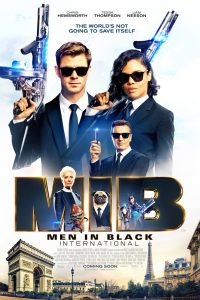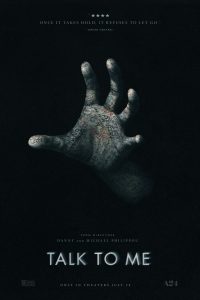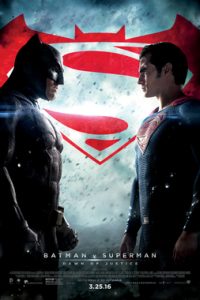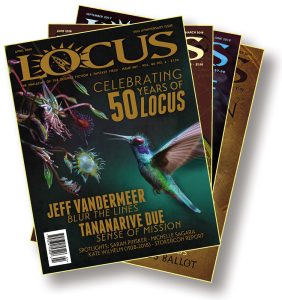Death of a Unicorn Review: A Wickedly Clever Monster Movie? by Erin Underwood
Death of a Unicorn blends fantasy and horror with a weird monster movie twist, but is it enough to refresh a somewhat stale fantasy trope? Written and directed by Alex Scharfman, this A24’s genre-crossing film stars Paul Rudd and Jenna Ortega as the father-daughter duo of the story along with a talented cast of supporting actors including Richard E. Grant, Téa Leoni, and Steve Park among others. A24 is known for films that often take an unconventional approach to their stories. So, how did they do with this fantasy-horror thriller?
Read Erin’s review below or watch her out-of-the-theater reaction on YouTube:
In Death of a Unicorn, Paul Rudd plays Elliot Kintner, a lawyer for a large pharmaceutical company that is evaluating him for a promotion and maybe even a seat at the table, which would transform his life. The only catch is the firm’s ailing founder, Odell Leopold, played by Richard E. Grant, is a real “family guy” who wants to see how well Elliot fits into the family. So, he invites Elliot to a retreat at the family’s private estate on an isolated preserve, deep in the Canadian Rockies, where Odell plans to assess whether Elliot is the right person to help carry on the company’s legacy.
Elliot brings along his college-aged daughter, Ridley, played by Jenna Ortega, to enhance his family-values caché. However, the two have been estranged since the death of Ridley’s mother. Elliot hopes this trip can be both a business opportunity and a chance for the two to reconnect, but things take a sharp turn when they hit and kill a unicorn. Unsure what to do with it, they load it into the back of their SUV and head to the estate, hoping to figure things out later. Once they arrive, the presence of the unicorn sets off a strange series of events, especially when Odell—who’s dying from cancer—realizes that the restorative power of the unicorn’s blood might be more than just myth. From there, their weekend getaway transforms into a fight for survival.
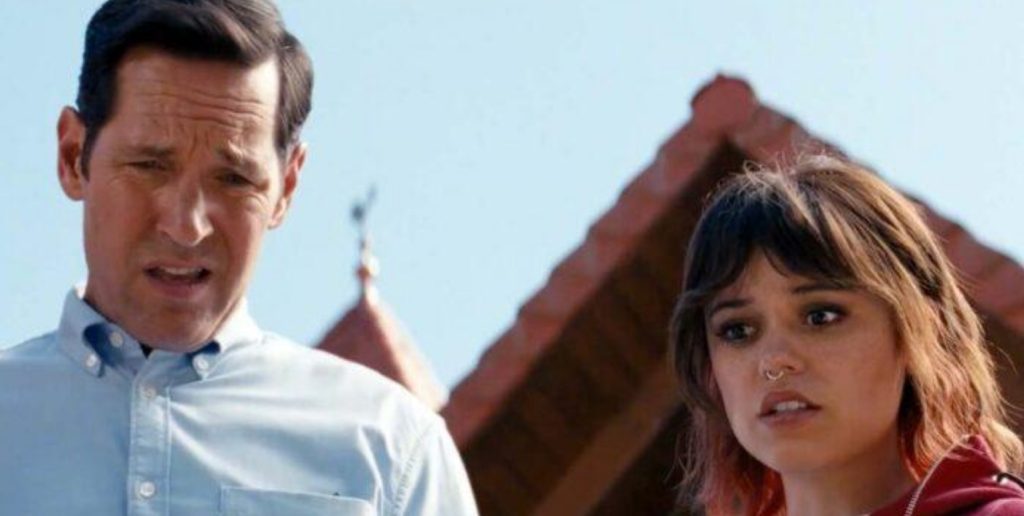
First Impressions
As a huge fan of both horror and fantasy, this was a film that I had been wanting to see for a while.
What grabbed me wasn’t just the unicorn—although, yes, it’s fun to see one in a horror film because
that’s new! Remember this is A24, which means this isn’t your typical unicorn fantasy full of rainbows
and glitter. There’s not even a medieval castle or knight wandering through a foggy English forest. We’re deep in the Canadian Rockies and far from the traditional European setting that a unicorn normally brings to mind, and that alone sets a new tone for how traditional mythology can be used.
This isn’t Peter Beagle’s unicorn. It isn’t soft or magical in the traditional way. It’s dangerous, strange, and very much other. While some of the twists in the story are surprising, the creature isn’t just there for shock value. The way it affects people around it is thoughtful, and the way it’s treated by the humans (as both an object of wonder and a commodity) all tap into a much deeper mythology that expands rather than reduces unicorn lore.

Artistic Direction and Thematic Layers
One of the smartest things this film does is to lean into the historical symbolism of the unicorn,
particularly through its connection to the medieval tapestry series The Hunt of the Unicorn. Those seven tapestries depict a romanticized version of the hunt, but beneath the beauty of its intricate design lies a darker tale of obsession, sacrifice, and control. The unicorn (often viewed within a Christ-like lens) is a symbol of purity that is hunted, killed, and resurrected by humanity to enhance their own well-being, raising questions about what we’re willing to destroy or sacrifice in pursuit of personal power. Those same themes run through this film, calling into question who the real monster is… the monstrous mythical creature or the people desperate to claim it.
The only one in the film who seems to understand the unicorn is Ridley, the modern reflection of the maiden from the tapestries, and while she’s not entirely innocent, Ridley isn’t entirely complicit either. Instead, she’s caught between trust and betrayal, echoing the story in the tapestry as Odell seeks to use Ridley just as the nobility used the maiden in the tapestry. There are so many layers to the themes within the film, themes that are interconnected to each other as well as to history, nature, and mythology. Visually, the film draws sharp contrasts between the lush wilderness against the bright sterility of the biotech labs, kind of like the shadow of the grotesque against the beautiful. Like the original tapestries, it places brutality inside a breathtaking Eden, drawing a striking visual contrast between the violence of the hunt and the fragile beauty of the world. This is a monster movie that refuses to make the monster the villain. The real horror isn’t the unicorn—it’s the people trying to possess it.
Corporate Greed and Moral Decay
One of the film’s most compelling threads is its exploration of corporate greed, but not as something overtly evil. The unicorn is a pivotal example, becoming both a deified and weaponized object, making it central to the story’s conflict. Instead, it’s a slow erosion of values, the immediacy of the need and opportunity that the unicorn presents supercharges the decay or elevation of the morality of the characters. People who once believed they were doing good find themselves justifying exploitation when faced with a miraculous opportunity. It’s at this point that the unicorn stops being about hope and transforms into a symbol of corporate power and profit, even for the well-meaning characters like Elliot and the medical team.
Ridley rises as the film’s moral compass, calling out the greed around her, even her father’s. Her way of fighting for the unicorn isn’t violent, but something softer and smarter that restores hope in the face of a violent, existential threat that could consume everyone around her. Odell and his family embody the theme of beneficent corporatism that shrouds a deeper, more insidious hunger for wealth and power They present as idealists—noble and visionary like the royalty within the tapestry—but when real power appears, their true motives surface. Their masks slip, revealing a hunger for legacy and control at any cost.
Smart Storytelling
What I appreciated most about Death of a Unicorn was the way they addressed its potential plot holes. Throughout the film, I kept jotting down little notes like, “Why are they doing [redacted]? Why haven’t they done [redacted] yet? Why didn’t she say [redacted]?” And, yes, I’m trying not to give too many spoilers because these [redacted] issues are all spoilers that get resolved. It actually felt like an editor read the script, made notes with a red pen, and then Scharfman addressed each of them before going to production. That feels rare these days.
However, the movie does leave some of the big questions unanswered, such as, “Where do unicorns
come from?” and “How did the unicorn get to Canada?” The thing is, we don’t need to know its origin story for this film to work. It’s magical. It’s mythological. That’s enough. And honestly, trying to explain it would have taken away from the eerie realism that the film manages to pull off. It’s one of those times when not knowing makes the story stronger.
Genre Fusion That Works
One of the most refreshing things about Death of a Unicorn is how it doesn’t try to subvert the fantasy and horror genres. Instead, it fuses them together without leaning too hard into gore for the sake of shock value as it creates a fresh feel to a very old and somewhat stale fantasy trope. As a result, the film elevates both genres by taking them seriously while avoiding the traps of parody and pretension. That is not to say there isn’t any comedy in the film because there are some well-written comedic moments sprinkled throughout. After all, with Paul Rudd in the film, adding a bit of humor is a given, but those moments are intentional and well timed. They give us breathing room without releasing the tension. The film respects its audience enough to let the story breathe, opening it to moments of levity without letting those moments hijack the emotional weight of what’s happening.
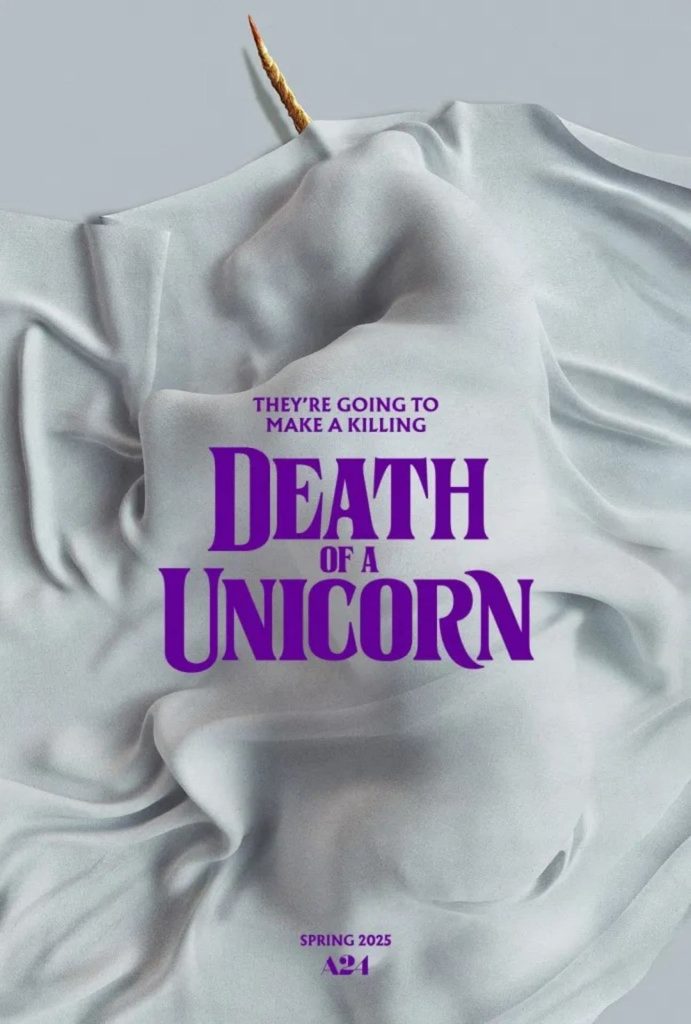 Recommendation & Final Thoughts
Recommendation & Final Thoughts
Death of a Unicorn like most films isn’t perfect, but is it ticket worthy? This is a smart, stylish story that blends horror, fantasy, and even a little history in ways I didn’t expect. It’s got moments of gore, moments of beauty, and moments that are genuinely funny, which helps balance out the darker tones. It’s a great friends and family film or even a date night movie. However, it’s not a good choice for young kids, even though there’s a unicorn. If you’ve got a young, sensitive child who loves magical creatures, this probably isn’t the right film for them. However, for teens, adults, fantasy lovers, and horror fans this is ticket-worthy, 100%.
Death of a Unicorn surprised me. I walked in expecting something weird, and yes, I got something weird. However, it’s also a thoughtful and refreshingly well-written film. It respects its mythology, honors its genre roots, and gives us something that feels new without trying too hard to be edgy. I love seeing fantasy tropes used in different ways, especially outside of the usual European settings, and above all, I really loved that this story didn’t fall into the trap of being just another “maiden and unicorn” tale.



